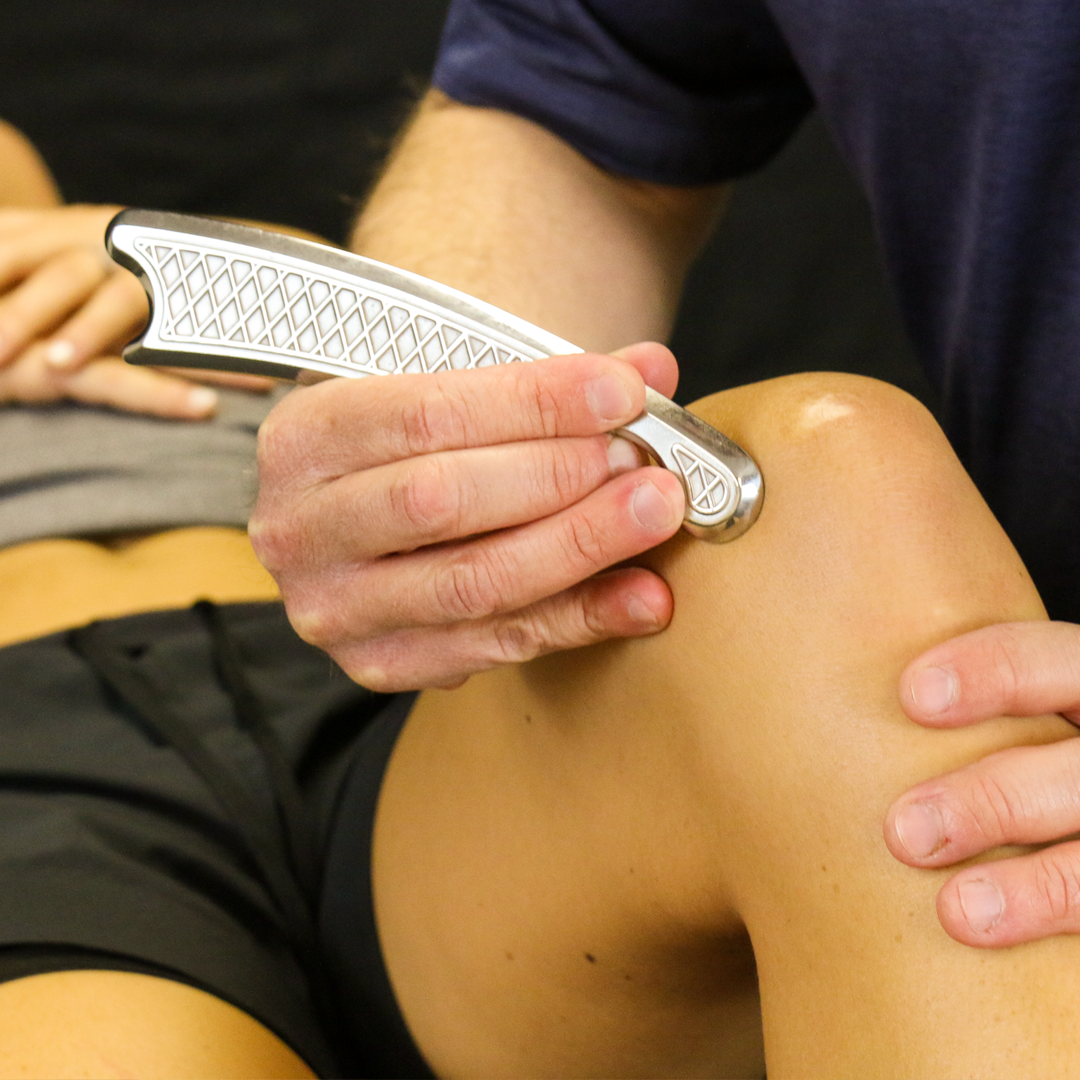What is Runner’s Knee?
Runner’s knee or patellofemoral pain syndrome (PFPS) is common not only in serious runners but in many walks of life. The condition shows up as dull pain around the front of the knee, where the knee connects with the lower end of the thighbone. It may be caused by overuse, inherent structural defect in the muscles, ligaments or skeleton. The causes of knee pain are as diverse as the population who may experience it.
Here we will emphasize the knee and adjacent thigh, but patellofemoral pain syndrome may also be influenced by weak thigh muscles, tight hamstrings, tight Achilles tendons and poor foot support. Gait also matters. Check that shoes are properly fitted to your step and are not worn down. Distance running, even more than some other common athletic pursuits, is of course subject to warnings about excessive training and overuse.
PFPS most commonly manifests in several ways. It can show up as pain in and around the kneecap that you feel when you are active. Conversely, pain may appear after sitting for a long time with the knees bent. In either case it may be accompanied by weakness or feelings of instability in the knees and legs.
Keep in mind that symptoms of runner's knee may look like other conditions and health problems. Your HawkGrips provider will perform diagnostic testing before and during treatment. In addition to knee pain, factors that may affect your therapist’s treatment choices may be your age, overall health and health history, amount and severity of pain, and general lifestyle considerations.
The best course of treatment for runner's knee is to stop running until you can run again without pain. In conjunction with HawkGrips IASTM, treatment may include cold packs, elevating the leg by resting with your knee higher than your heart, elastic taping, compression knee wrap, stretching exercises, strengthening exercises and special shoe inserts.
How can HawkGrips IASTM alleviate PFPS?
HawkGrips IASTM therapy helps to counteract some of these causes by reducing muscle and soft tissue restrictions. In 2017, researchers at Youngstown State University (Ohio, USA) suggested that “In addition to providing a mechanical advantage for the clinician for deeper penetration, it is theorized that IASTM increases vibration perception by the clinician’s hands holding the instrument to detect altered tissue properties.”
The study also pointed out a further area of investigation. “For therapeutic effects, the current literature often emphasizes the mechanical effects of IASTM in the release and breakdown of scar tissue, adhesions, and fascial restrictions, but somehow overlooks the neurophysiological effects of IASTM.” The Youngstown team found that “The data indicates that IASTM changes the neural activities.” This may extend beyond action on the directly affected muscle groups to improve the body’s overall response to pain and stress. J. Phys. Ther. Sci. 29: 654–657, 2017
Andrea Lasner likes to utilize the convex edge of a HawkGrips HG8 scanner to “fan” the interosseous area. She uses that tool to help separate where the vastus and IT bands are. She finesses the tool to treat the area in both directions. The HG8 can be used to flush out restrictions along the quad.
The HawkGrips Multi-Curve fits really nicely around the quad, fits right into the medial of the inner thigh, the abductors and sits really nicely around those areas. This tool has both single and double beveled edges, which gives the clinician flexibility to treat in both directions, one direction, with more intensity, or taking some off if you need to. Andrea uses the double beveled edge to flush restrictions out in both directions on the quad. Andrea also elevates the quad while “lifting” the patella tendon area with the Multi-Curve.
References
Weiqing Ge, Emily Roth, Alyssa Sansone. A quasi-experimental study on the effects of instrument assisted soft tissue mobilization on mechanosensitive neurons. Phys Ther Sci. 2017 Apr; 29(4): 654–657. https://doi.org/10.1589/jpts.29.654
https://my.clevelandclinic.org/health/diseases/17914-patellofemoral-pain-syndrome-pfps

